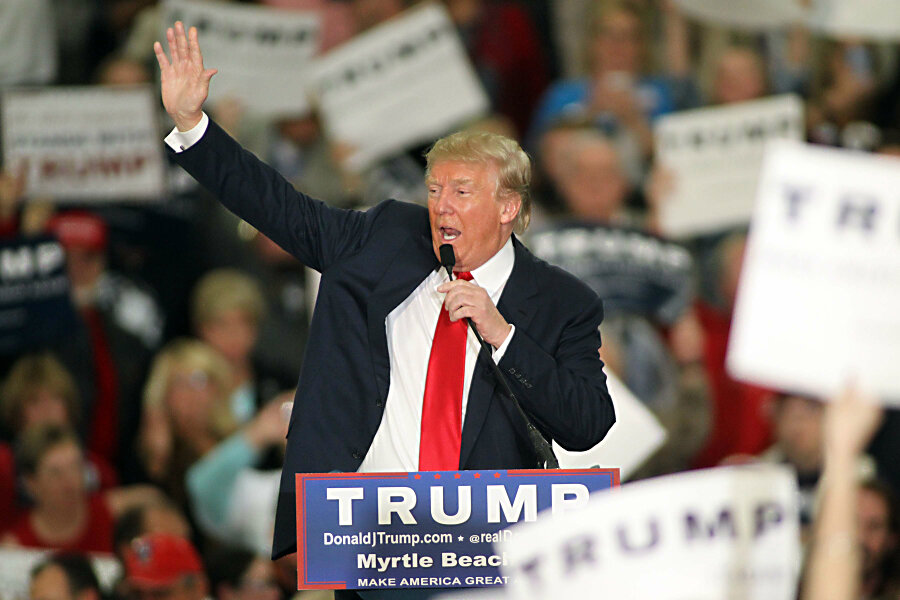No, Donald Trump supporters aren't actually everywhere
Loading...
Sometimes it seems as if Donald Trump voters are sweeping the nation. They’re everywhere on cable news, often explaining to cameras why nothing The Donald says – no matter how outrageous or divergent from established facts – will change their view that he’s the guy needed to shake up Washington’s political culture.
Plus, Mr. Trump is still leading GOP polls. That’s the measure of support that counts. According to the RealClearPolitics rolling average of major surveys, he’s currently the choice of 27.7 percent of Republican voters – almost eight percentage points up on second-place Ben Carson.
But before you start your float for a Trump inaugural parade, or prepare to flee for Canada, we’d like to put this level of support in perspective.
First, there aren’t that many Trumpians, from the point of view of the nation as a whole.
He’s now supported by 25 to 30 percent of the 25 to 30 percent of Americans who self-identify as Republicans, notes data guru Nate Silver of FiveThirtyEight. That works out to about 6 to 8 percent of the total US electorate.
As Mr. Silver points out, that’s about as many Americans as believe the moon landings were faked.
It’s a little more than half the number of dedicated Atlanta Braves fans in the US, according to Gallup.
And it’s about a third of the number of Hispanics in the United States. You know something about Hispanic voters? They really, really don’t like Trump. While they are disproportionately less likely to vote than other groups, they do account for about 9 percent of actual voters.
Which is, uh, more than the support Trump currently holds.
This brings us to our second point: If Trump is going to win either the nomination or the general election, he will have to build on his current base. Significantly.
That’s certainly possible, at least where the nomination is concerned. Many pundits have pointed out that if you combine the vote shares of Trump and Dr. Carson – two unconventional outsider candidates – you get about 50 percent of the GOP vote. That’s close to a majority, and victory in an eventual two-person primary race.
Except that Trump and Carson voters might not combine if the latter drops out. They’re different demographics, generally speaking. Trump’s voters are less-educated, lower-income white Republicans. Carson is a traditional evangelical, social-conservative GOP candidate.
And a fairly large number of Republican voters continue to say they won’t vote for Trump under any circumstances. In a Quinnipiac poll taken earlier this month, 25 percent of GOP respondents said they “would definitely not support” Trump for president.
That’s a pretty big obstacle to the nomination for Trump to navigate around. True, 23 percent said the same thing about Jeb Bush. But last time we looked, Jeb!’s chances of sitting in the Oval Office seemed on a precipitous decline.
Which is the third and final point here: Something huuuggge would have to change in this calculation for Trump to sit in the Oval Office in an official capacity.
Nothing is impossible in politics. We have been very wrong about Trump before. But in today’s polarized political America, Trump is viewed extremely negatively by Democrats. They’d be highly energized to vote against him. Perhaps more important, neoconservative foreign-policy hawks, general establishment Republicans, and current GOP lawmakers might be inclined to sit on their hands.
One last bit of poll data shows how Trump plays in America as a whole: According to Public Policy Polling, 46 percent of Americans think Trump is the current presidential candidate most likely to say something inappropriate at the table and ruin Thanksgiving dinner.
In PPP’s (admittedly semi-serious) poll, that number is the same as the one for all the other candidates, combined.








